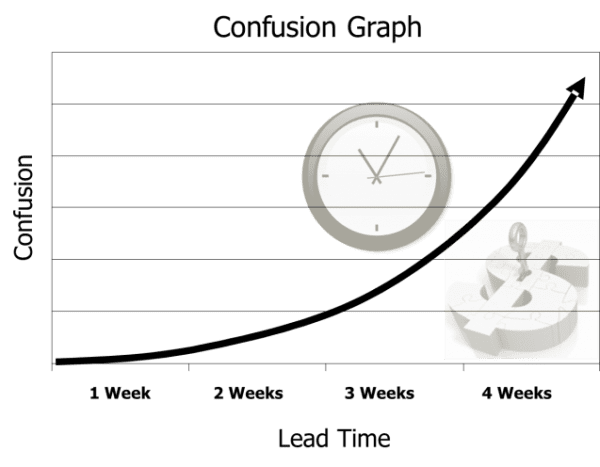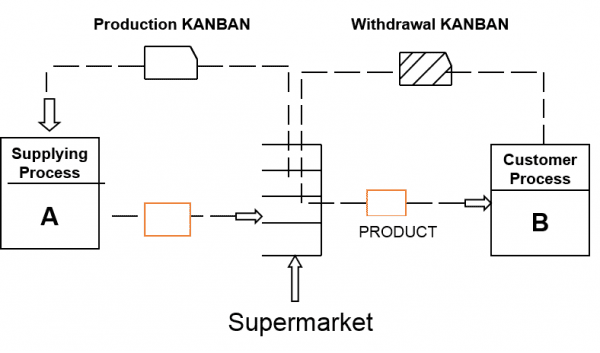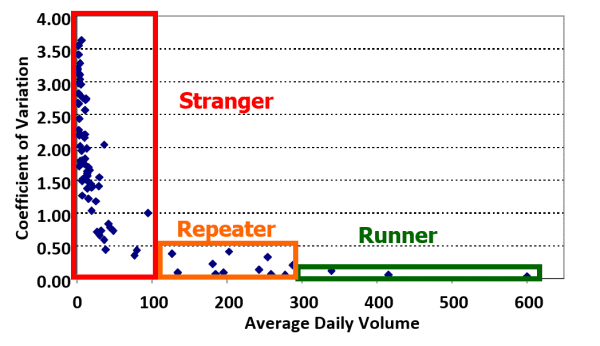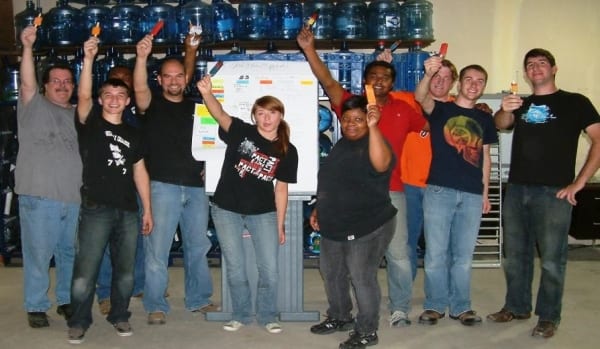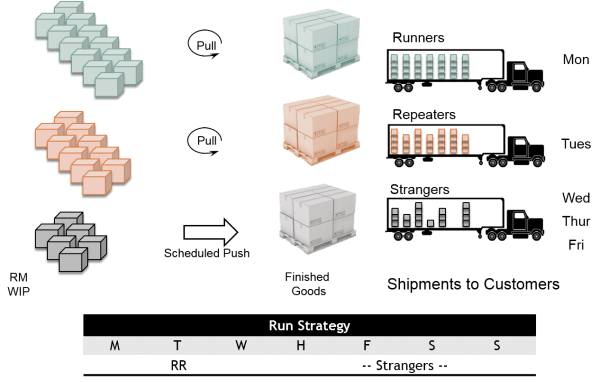Runner, Repeater, Stranger Analysis
Description:
A lot of games are played with inventory valuation in most corporations. Most days it’s “we have too much $ inventory on the books.” Typically at the end of a reporting period, however, it’s “we need to build inventory.” TGG’s runner-repeater-stranger (RRS) inventory analysis allows an organization to reduce this binge tendency by answering a few key questions:
- Which inventory should we stock and what should the strategy be for each one (is the inventory a runner, repeater, or a stranger?)
- How much, of each type, should we store in raw materials (RM), work in process (WIP), and finished goods (FG)?
- How often should we schedule this production and what should our stocking strategy be?
In addition, production schedules are changed dozens of times every week – and often several times during the same day. This **reactive approach incurs unnecessary expedited expenses and puts undue stress on the management team and employees. We are not putting enough time analyzing historical trends that may help us schedule. Are we profitable in these reactive modes? Most manufacturers can’t accurately account for the total cost of fire fighting.
With our thorough statistical analysis, we can help the organization not only answer ‘how much inventory,’ but also create a standard run strategy and schedule to maintain these levels.
Move from 4+ weeks lead time, 4+ weeks of inventory, and 25% forecast accuracy
to 1+ week lead time, 1+ week of inventory, and 75% forecast accuracy with tgg’s RRS Analysis
Here are some additional definitions:
Runners:
Low back office transactions to schedule, order, produce, stock & ship. World-class organizations do these transactions using visuals on the shop floor (rarely ‘scheduled’)
Production lot sizes = shipping quantities
Little to no shortages or missed shipments. RM, WIP, and FG inventory for runners is always on hand
Strangers:
Should consume most of our back-office human capital. These are hard to manage, hard to schedule, and hard to control and should consume most of our time
Little to no RM, WIP, and FG inventory on hand
Duration:
2 days SCO
12 days RUN (broken into three sessions)
2 days Evaluate
Typical Outcomes:
- Inventory amount, location, and typeset for RM, WIP, and finished goods
- Kanban calculations produced for runners
- Working capital $’s set for current and future state and a plan on how to attain the future step
- Standard run strategy and schedules built

